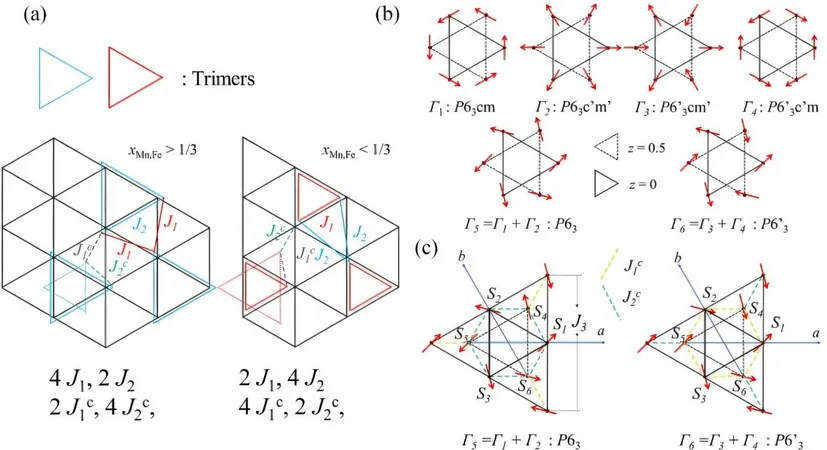
Groundbreaking Research Unveils Game-Changing Magnetic Properties in 2D Materials for Quantum Computing!
2024-11-13
Author: Jia
In an exhilarating development from a collaborative team, including experts from ANSTO, researchers have delved into the magnetic properties of two remarkable two-dimensional triangular lattice antiferromagnetic materials (2D-TLHAF) through advanced neutron scattering techniques. This pioneering study opens doors to the exciting potential of multiferroic materials in next-generation quantum computing technologies.
Multiferroic materials possess unique quantum characteristics that position them as frontrunners for future computing systems. Their ability to process vast amounts of information far more efficiently than conventional technologies makes them a promising candidate for transforming how we think about data management and computational capabilities.
Focusing on two specific materials, hexagonal h-Lu0.3Y0.7MnO3 and h-Lu0.47Sc0.53FeO3, the research has highlighted their intriguing role as frustrated antiferromagnets. In simpler terms, the spins of the atoms cannot perfectly align due to their triangular lattice arrangement, leading to complex magnetic phenomena that have proven challenging to study using traditional approaches.
Lead author and esteemed instrument scientist, Dr. Shinichiro Yano, remarked on the "fascinating magnetic behaviors" observed in these materials, which conventional neutron scattering techniques struggle to characterize. The research team utilized the advanced setup of the cold triple axis spectrometer Sikawith, incorporating polarized neutrons and cutting-edge neutron instruments at the Australian Center for Neutron Scattering to gather comprehensive data.
According to findings published in the journal *Physical Review B*, researchers introduced two irreducible representations to accurately describe the magnetic structures of these materials. This novel approach allows for a deeper understanding of the alignment and interaction of atomic spins within the lattice.
Dr. Andrew Manning, a Helium-3 Polarisation instrument scientist, emphasized the significance of using dual irreducible representations in portraying 2D-TLHAF magnetic structures, revealing that this method provides clarity over the spin reorientations often previously reported when relying solely on one representation.
In a significant twist, the study unveiled crucial differences in interplanar interactions between the two materials. While h-Lu0.3Y0.7MnO3 demonstrated notable interplanar interactions, h-Lu0.47Sc0.53FeO3 did not, challenging traditional theories about the role of these interactions in spin dynamics. Dr. Yano expressed astonishment at this finding, revealing that it challenges prior assumptions about the complexity of magnetic interactions inherent to these materials.
Overall, this cutting-edge research not only deepens our comprehension of the intricacies of spin reorientations but also sheds light on the true source of multiferroicity in 2D-TLHAF systems. The discoveries, while highlighting similarities in crystal and magnetic structures, suggest distinct origins for multiferroicity and spin behavior in the two substances studied. This groundbreaking work could mark a turning point in the advancement of quantum computing technologies, making the 2D triangular lattice materials a hot topic for future exploration. Stay tuned as the race towards revolutionary computational techniques accelerates!



 Brasil (PT)
Brasil (PT)
 Canada (EN)
Canada (EN)
 Chile (ES)
Chile (ES)
 España (ES)
España (ES)
 France (FR)
France (FR)
 Hong Kong (EN)
Hong Kong (EN)
 Italia (IT)
Italia (IT)
 日本 (JA)
日本 (JA)
 Magyarország (HU)
Magyarország (HU)
 Norge (NO)
Norge (NO)
 Polska (PL)
Polska (PL)
 Schweiz (DE)
Schweiz (DE)
 Singapore (EN)
Singapore (EN)
 Sverige (SV)
Sverige (SV)
 Suomi (FI)
Suomi (FI)
 Türkiye (TR)
Türkiye (TR)